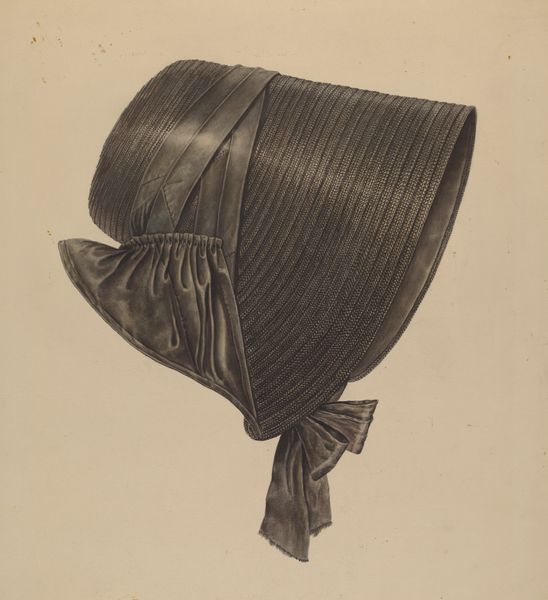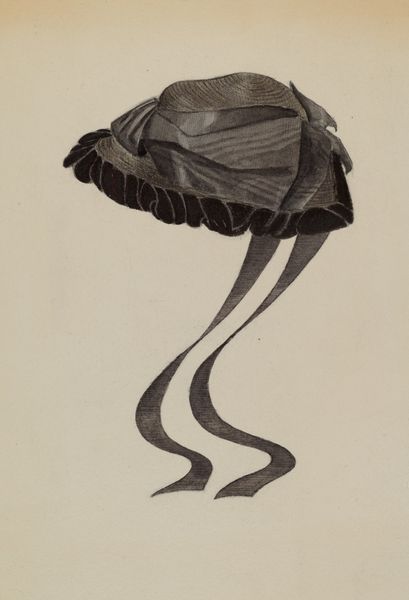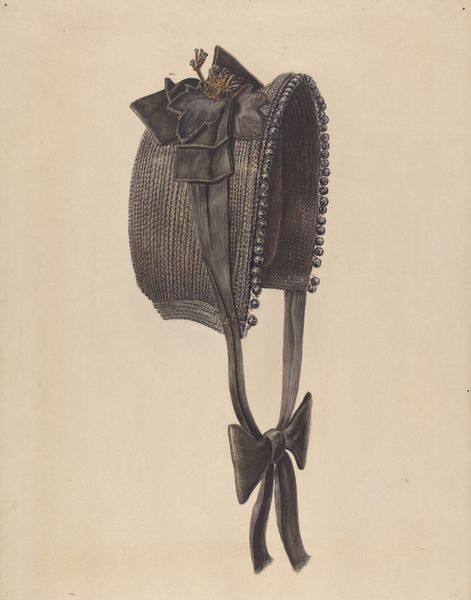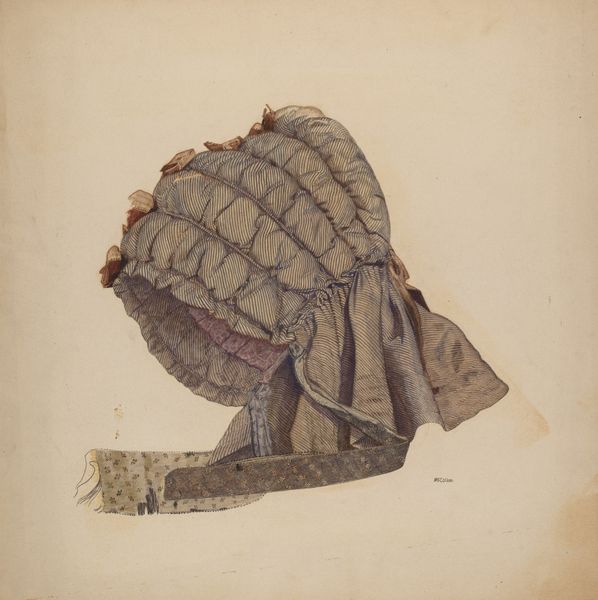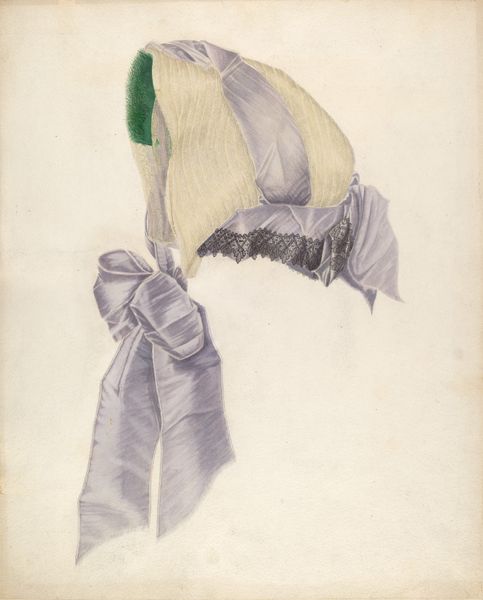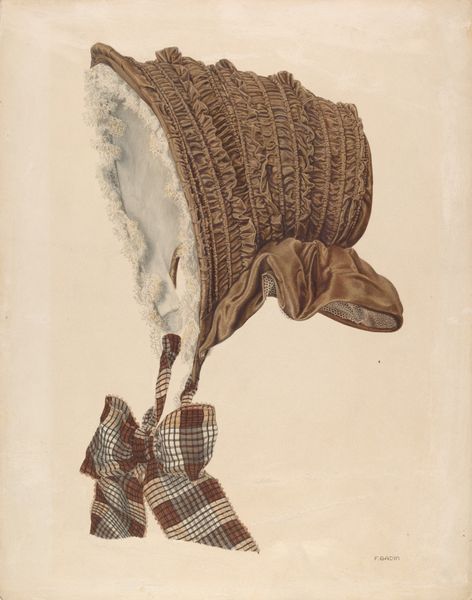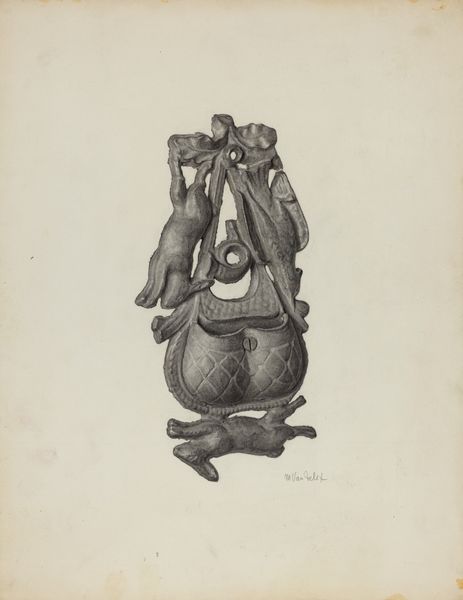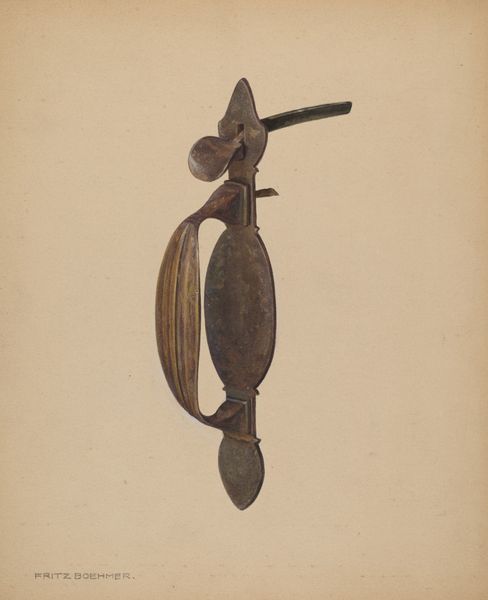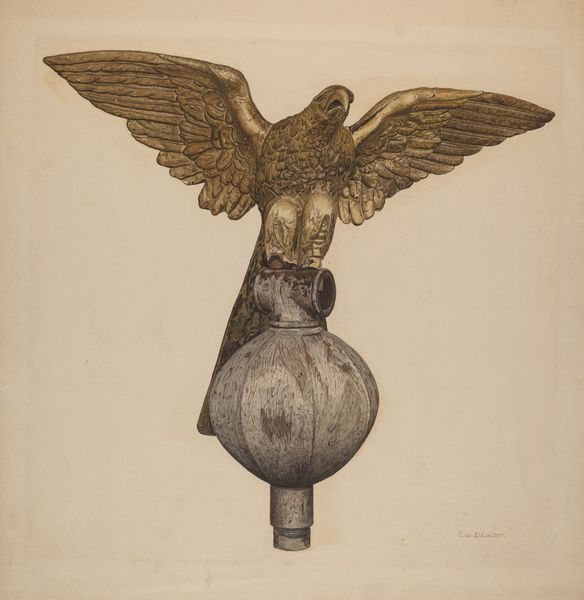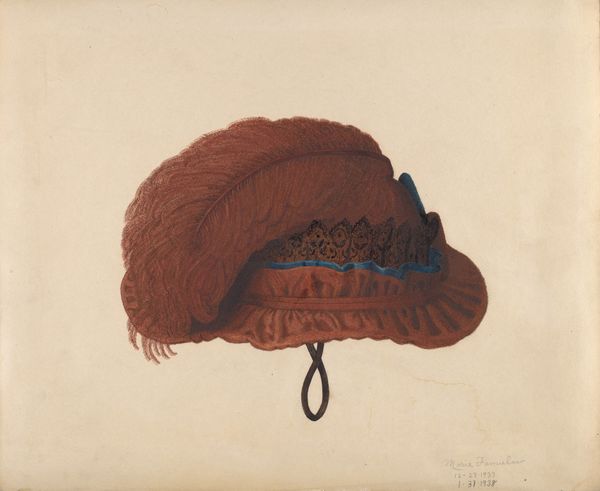
drawing, paper, graphite
#
drawing
#
paper
#
pencil drawing
#
graphite
#
graphite
Dimensions: overall: 45.8 x 36.5 cm (18 1/16 x 14 3/8 in.)
Copyright: National Gallery of Art: CC0 1.0
Curator: What a captivating study in graphite! This drawing by Nancy Crimi, titled "Bonnet," likely dates between 1935 and 1942, rendered on paper. Editor: It's quite somber, isn't it? Almost sepulchral. The dark tones, even in rendering a relatively simple object like a bonnet, evoke a sense of melancholy. Curator: I see it too. Historically, bonnets signaled modesty, protection, domesticity. The weightiness of the graphite here seems to underscore those notions, hinting perhaps at constraints imposed by such societal expectations. It looks almost like widow's wear, symbolically cutting off sensuality. Editor: The contrast is striking though— between the weighty texture that you talk about and then those delicate ribbons! It makes for an interesting dichotomy. The artist is manipulating the tension through form and tonal value. Notice how the textures lead your eye, that she suggests the volume purely through shading—there are so few pure outlines. It's about tone against tone, which gives this bonnet so much depth. Curator: Precisely! The softness implied by the subject matter, contrasted with the medium itself, amplifies its meaning. Bonnets were intimate objects, after all. Think of mothers, daughters, private moments. It represents an internal world now presented for all of us to view. Editor: Indeed. The shadows deepen those interior implications too. They add to this almost claustrophobic mood of being swallowed in time. It makes one really contemplate ideas surrounding privacy. And is the shadow real or applied by the artist to amplify meaning? I wonder what Nancy Crimi had in mind... Curator: The very fact we’re still drawn to this image speaks volumes about how effectively Crimi communicates universal experiences linked to these artifacts, right? Editor: Absolutely, even if, at first glance, one only perceives an unassuming sketch, it still provokes questions concerning shape, tone, cultural association, and history! It becomes quite profound!
Comments
No comments
Be the first to comment and join the conversation on the ultimate creative platform.
